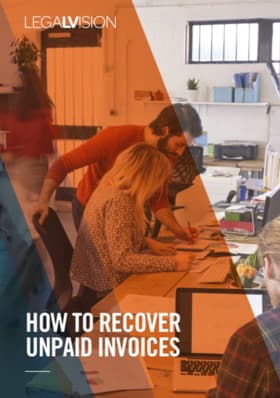Table of Contents
An individual that is unable to pay their debts can be declared bankrupt. Bankruptcy can be entered voluntarily or by court order. Whether voluntary or court ordered, bankruptcy provides a procedure for an authorised person, known as a trustee, to take control of and administer the financial affairs of a debtor according to the rules in bankruptcy law. This article looks at the process for both voluntary and court ordered bankruptcy.
Voluntary Bankruptcy
A debtor may choose to become bankrupt voluntarily by presenting a debtor’s petition.
Declaration of Intention to Present a Debtor’s Petition
As a first step, a debtor may elect to present a Declaration of Intention to Present a Debtor’s Petition. This provides the debtor with protection from further recovery action during a 21-day moratorium. The purpose of the moratorium is to provide the debtor with some ‘breathing space’ so they may fully consider their options in dealing with their debts. However, this step is not compulsory, and a debtor may proceed directly to a debtor’s petition if they wish.
Debtors will not receive the benefit of the moratorium if they have:
- been presented with a creditor’s petition;
- benefited from the moratorium in the preceding 12 months; and
- presented a debtor’s petition that remains pending.
Debtor’s Petition
Voluntary bankruptcy involves the debtor presenting to the official receiver in bankruptcy a:
- debtor’s petition; and
- statement of affairs, which requires the debtor to set out all of their assets and liabilities and also other information required under the Bankruptcy Act.
The official receiver does not act judicially when accepting a debtor’s petition. However, there are some limited circumstances where they will reject a debtor’s petition. These include, amongst others:
- when a debtor does not have the requisite connection with Australia, for example, is not personally present, is not ordinarily a resident in Australia, or does not have a dwelling house or place of business in Australia;
- where the debtor’s creditors have accepted a Part X personal insolvency agreement;
- where the debtor is a party to a Part IX debt agreement; or
- when prescribed information on alternatives to and consequences of bankruptcy has not been provided to the debtor.
Court Ordered Bankruptcy
If a debtor is unable to or has refused to pay a creditor, the creditor may elect to commence bankruptcy proceedings by filing a ‘creditor’s petition’ with the:
- Federal Court; or
- Federal Circuit Court.
The creditor’s petition seeks a ‘sequestration order’ against the debtor’s estate. Once the court grants a sequestration order, the debtor becomes bankrupt, and the appointed trustee will commence administration of the bankrupt’s estate.
Who Can Present a Petition?
Any individual or corporate creditor may petition the court for a sequestration order against their debtor provided the:
- debt or combined debts owed total $10,000 or more;
- debtor has the requisite connection with Australia (discussed above);
- creditor can establish that the debt is owed; and
- debtor committed an act of bankruptcy within the six months immediately preceding the presentation of the petition.
Secured creditors should proceed with caution and only claim to the extent the amount of the debt owed to them exceeds the value of their security. Additionally, if a secured creditor wishes to petition for the total debt owed, they must be willing to surrender their security to the trustee in the event that the court grants a sequestration order.

Whether you’re a small business owner or the Chief Financial Officer of an ASX-listed company, one fact remains: your customers need to pay you.
This manual aims to help business owners, financial controllers and credit managers best manage and recover their debt.
Creditor’s Petition and Sequestration Proceedings
Furthermore, if proceedings are unopposed, the process for obtaining a sequestration order is largely procedural.
| Process | Explanation |
| Creditor’s Petition | A creditor’s petition must be in the prescribed form and must be presented within six months from the act of bankruptcy upon which the creditor relies. The creditor must also disclose the specific act of bankruptcy. The creditor or an authorised person of the creditor must provide an affidavit verifying the creditor’s petition. Further, a creditor must file a creditor’s petition in either the Federal Court or Federal Circuit Court. Finally, they must notify the official receiver of the creditor’s petition. Once filed, the matter will be listed for hearing. |
| Affidavit of Search | Prior to filing a creditor’s petition, the creditor must obtain a search of the National Personal Insolvency Index (NPII) to ascertain that any other creditor has not already commenced bankruptcy proceedings. This is evidenced in an affidavit of search. |
| Consent of Trustee | A creditor may elect which trustee that they wish to appoint to administer the bankrupt’s estate. However, the trustee must consent to the appointment, which must be filed with the court. If the creditor does not obtain the trustee’s consent, the court will appoint the official trustee to administer the bankrupt’s estate upon the making of a sequestration order. |
| Service | Once filed, the creditor’s petition, affidavit of search, affidavit of service of the bankruptcy notice and any consent of trustee must be personally served on the debtor. However, if a debtor actively evades service, an order for substituted service may be required. |
| Other Evidence | Prior to the hearing date, a creditor must file all other evidence on which they rely. This evidence is prescribed and includes an affidavit of: • service of the creditor’s petition; • the creditor or its authorised representative confirming that the debt is still due and owing; and • the final search of the NPII. |
| Schedule of Costs | Upon the making of a sequestration order, a creditor is entitled to seek a costs order in respect of the proceedings. The amount of costs claimable are prescribed and must be set out in a schedule that is provided to the court and served on any other active party in the proceedings prior to the hearing. |
| Supporting Creditors | Should a petitioning creditor not wish to proceed with a petition, another creditor, known as a supporting creditor, may seek permission from the court to continue with the petition. In this scenario, the supporting creditor is substituted into the proceedings in place of the original petitioning creditor. This is not uncommon in circumstances where a debtor makes payment to the petitioning creditor. Additionally, if a sequestration order is ultimately made, the payment made by the debtor to the original petitioning creditor may be ‘clawed back’ by the trustee as part of the administration of the bankrupt’s estate. |
Opposing a Creditor’s Petition
A debtor wishing to oppose a creditors petition must file and serve a notice setting out their grounds of opposition to the petition, together with an affidavit in support at least three days prior to the first hearing date. A debtor seeking to file their notice within this time period must seek leave from the court to do so.
The most common grounds for opposing a creditors petition include:
- the act of bankruptcy alleged in the creditor’s petition was not committed. For example, the bankruptcy notice was never effectively served;
- the amount being claimed by the creditor is not owed. For example, the debt has already been repaid, or the judgment debt is being challenged. This could include circumstances where the debtor has made an application to set aside a default judgment or is subject to an active appeal;
- a repayment agreement has been reached with the creditor;
- the debtor is not insolvent, meaning they can demonstrate that they are able and willing to pay their debts; or
- the debtor has a genuine and arguable counterclaim or offsetting claim against the creditor for an amount equivalent to or exceeding the debt owed to the creditor.
Key Takeaways
A debtor can be made bankrupt either voluntarily or by court order. The processes are completely different, however, the end result is ultimately the same. Further, it is important for creditors to remember that a debtor not wishing to be made bankrupt can oppose the making of a sequestration order on limited grounds. Therefore, if you are considering bankrupting a debtor, our experienced bankruptcy lawyers can assist as part of our LegalVision membership. For a low monthly fee, you will have unlimited access to lawyers to answer your questions and draft and review your documents. Call us today on 1300 544 755 or visit our membership page.
Frequently Asked Questions
If a debtor is unable to or has refused to pay a creditor, the creditor may elect to commence bankruptcy proceedings. Further, they can do this by filing a ‘creditor’s petition’ with the Federal Court or Federal Circuit Court.
Yes, a debtor wishing to oppose a creditors petition must file and serve a notice setting out their grounds of opposition to the petition. They also need to provide an affidavit in support at least three days prior to the first hearing date.
We appreciate your feedback – your submission has been successfully received.











